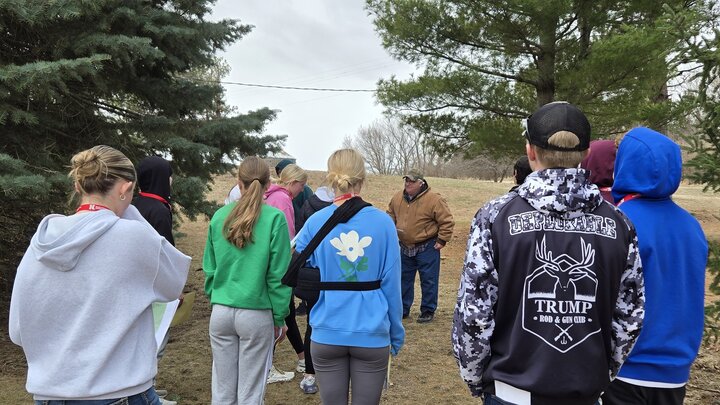While combining soybeans this year, or after harvest looking at the yield map, you may have noticed some spots that didn’t yield as high. A potential factor for these patches could be soybean cyst nematode, also known as SCN. The nematode can cause up to 30% yield loss without showing any significant above ground symptoms on the soybean plant.
Soybean cyst nematode is a soybean pathogen that is a plant-parasitic roundworm and goes through three main life cycle stages. The first stage of the life cycle occurs when a juvenile nematode hatches from the egg with adequate moisture and temperature levels in the spring. In the second stage, the juvenile penetrates the soybean root, moves to the vascular tissue and then establishes a feeding site. With the third stage, the nematode continues to feed and swell with the females eventually bursting through the root tissue.
There are effective management options, but before determining one, you need to sample for the presence of soybean cyst nematode. In the fall after soybean harvest is the best time to sample for SCN.
To sample for nematodes, use a soil probe with a one-inch diameter. Don’t use a spade. Collect 15-20 soil cores from similar management zones in a zigzag pattern over 10-20 acres. Cores should be taken from the root zone at a depth of about 6-8 inches. Place the cores in a bucket, break them up, and mix them well. Place about 2 cups into a bag and submit it for testing. Your local extension office may have some bags available for free soybean cyst nematode testing, so be sure to ask if they have bags.
Take note that soybean cyst nematode can be relocated by anything that moves soil. Some high risk areas that should be considered for sampling include field borders, low lying areas, low yielding patches, areas where the plant showed signs of stunting or yellowing sooner than the rest of the field, previously flooded areas of the field, entryways, and areas where brown stem rot or sudden death syndrome developed.
After sending samples off for testing, and identifying positive fields for the soybean cyst nematode, one management recommendation is to rotate between resistant varieties. A second recommendation is to rotate to a non-host crop. Rotation alone won’t eliminate SCN, but it will decrease the number in the soil. The third management recommendation is to consider using a seed treatment with a nematode-protectant. The seed treatment should only be used in conjunction with a nematode resistant seed variety. A final recommendation is to continue monitoring for SCN levels by testing to evaluate the effectiveness of the management options you are using.
You may go to Soybean Cyst Nematode | CropWatch | Nebraska and Scouting-and-Soil-Testing-for-SCN-Resource.pdf for more information.
If you send samples off and get results back, please enter them at SCN Profit Checker: Calculate Cost of SCN on Your Farm to get an idea of how much soybean cyst nematodes are costing you. All you need is the result with your nematode number, pH of the soil the sample is from, and the sand%.
Please call me, 402-584-3853 if you have any questions or would like more information.


